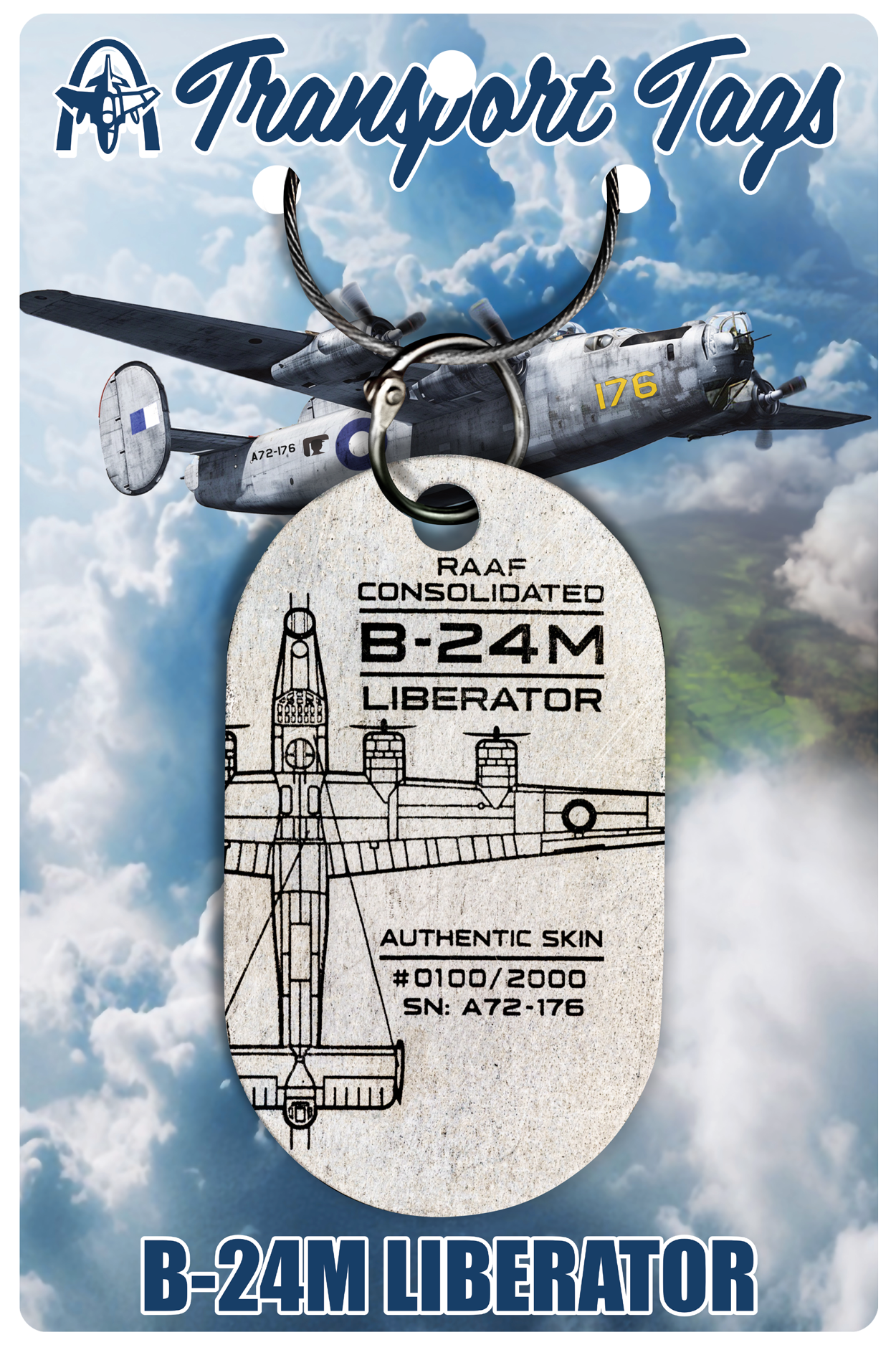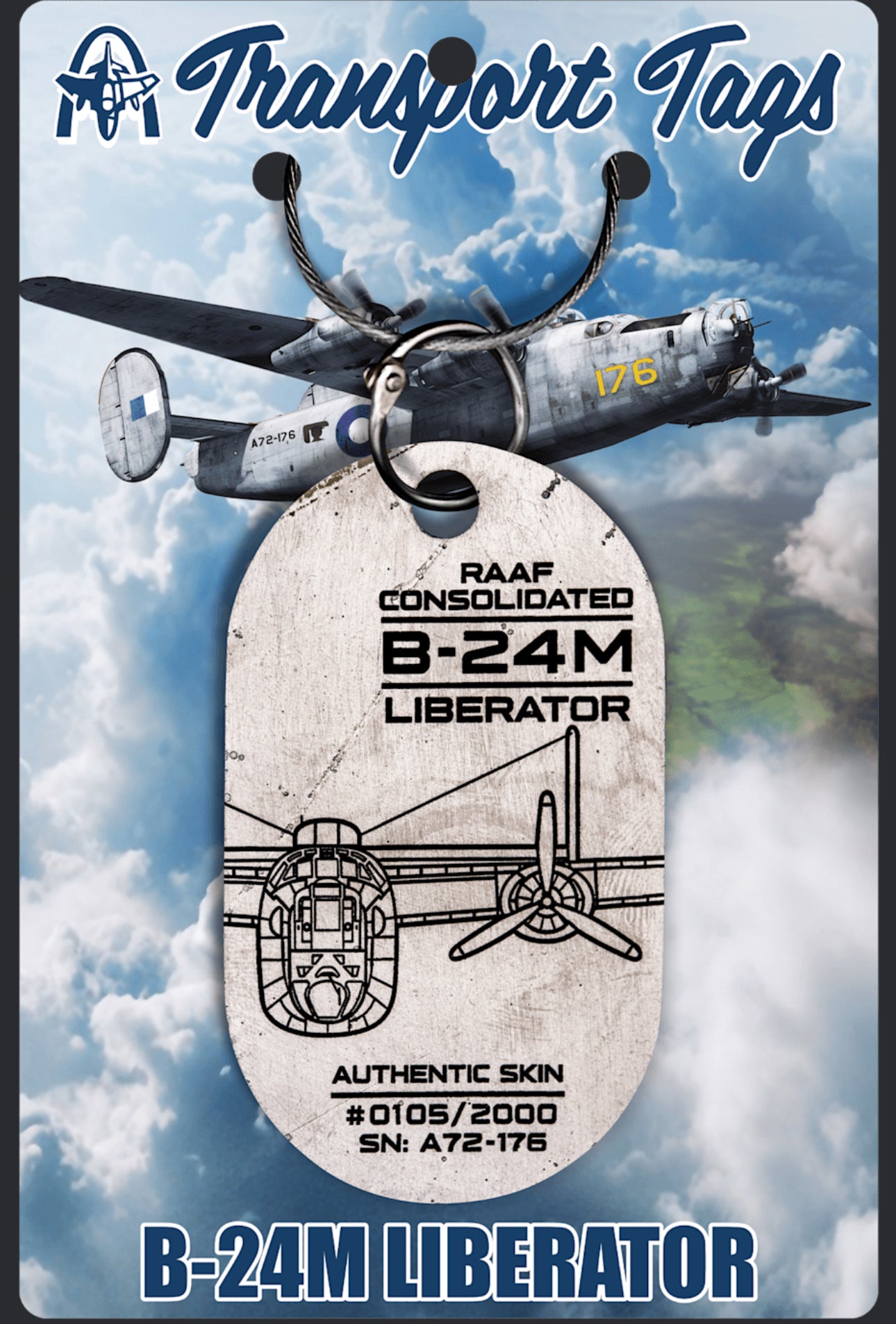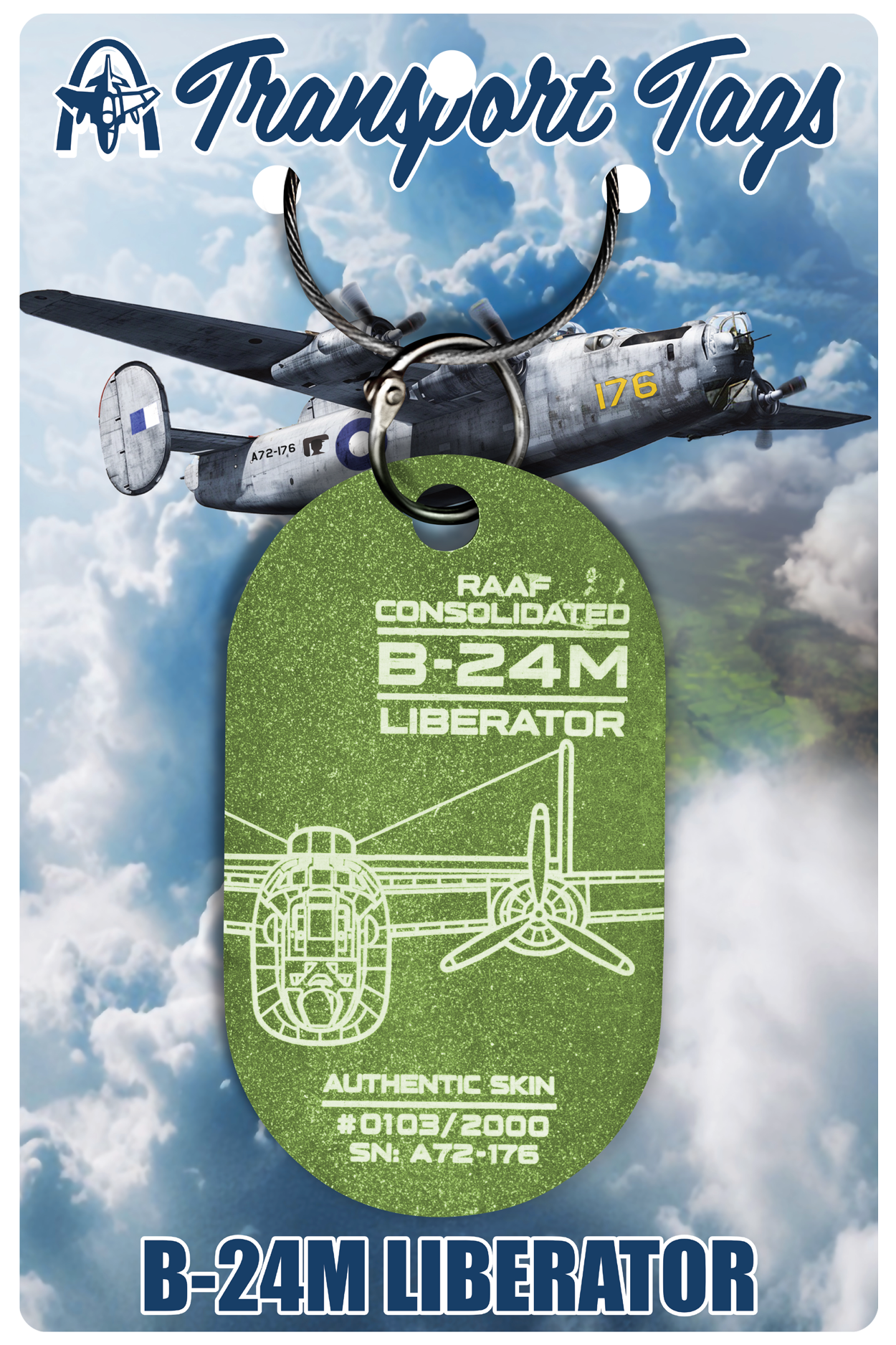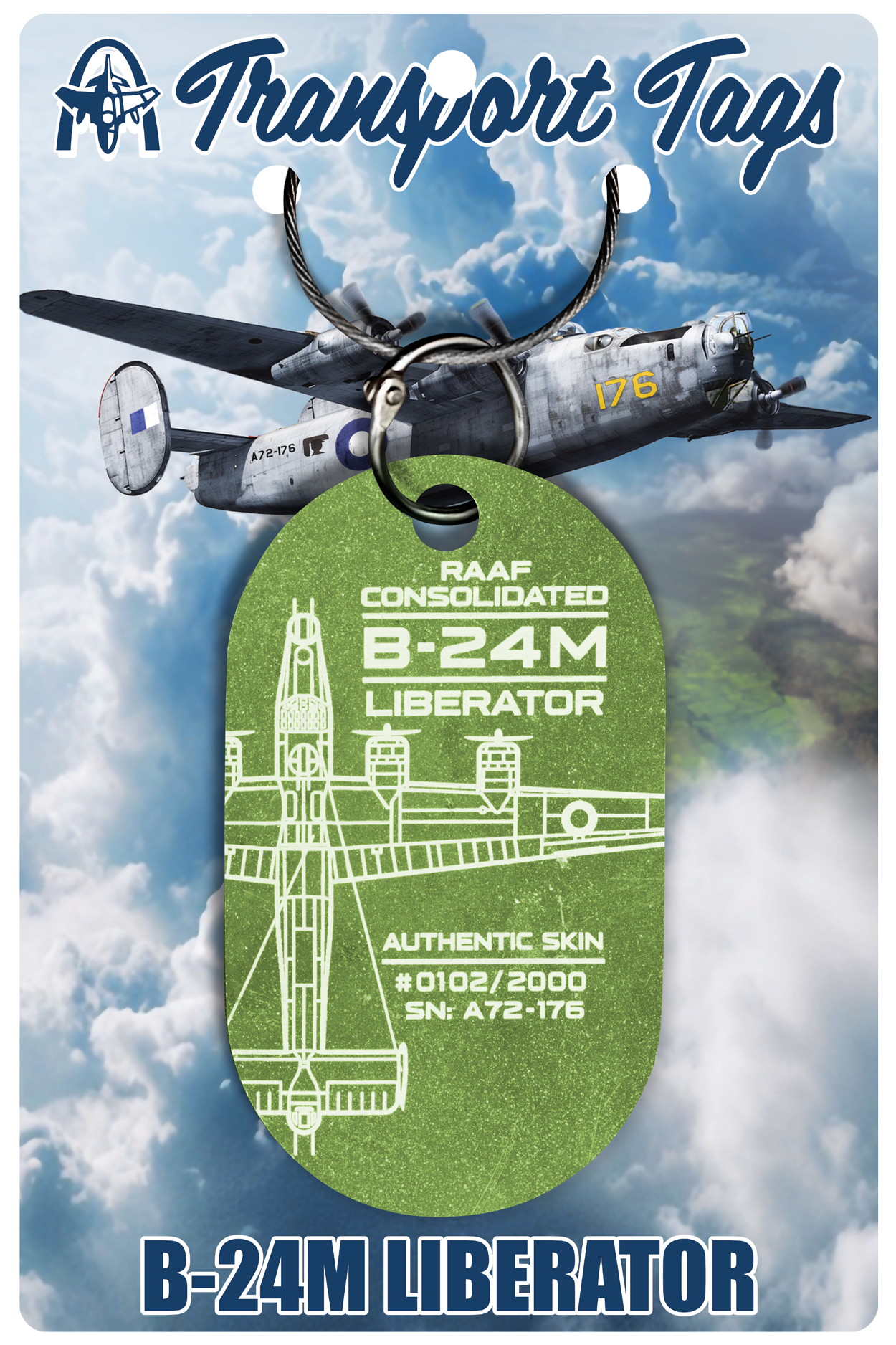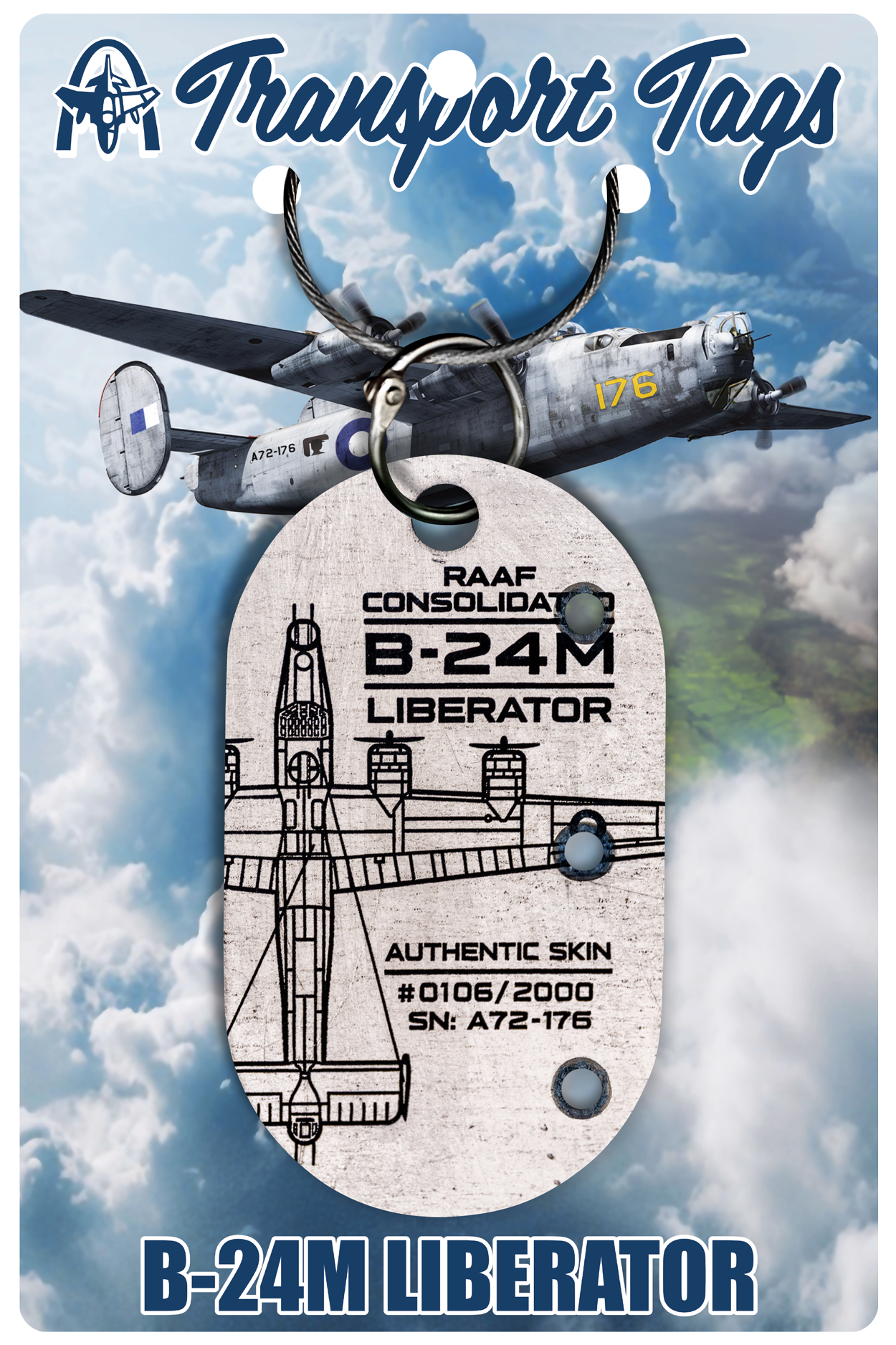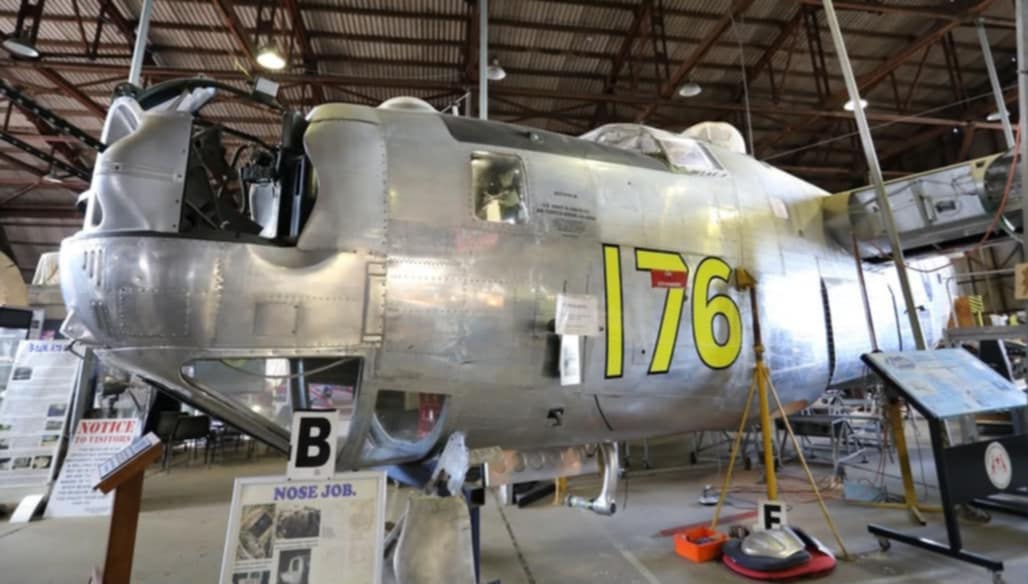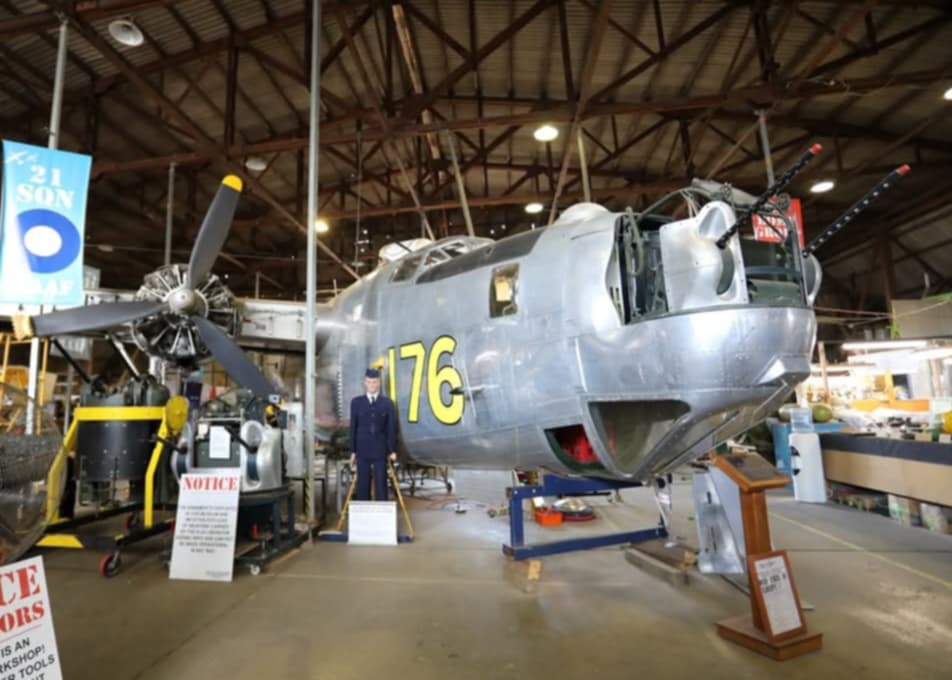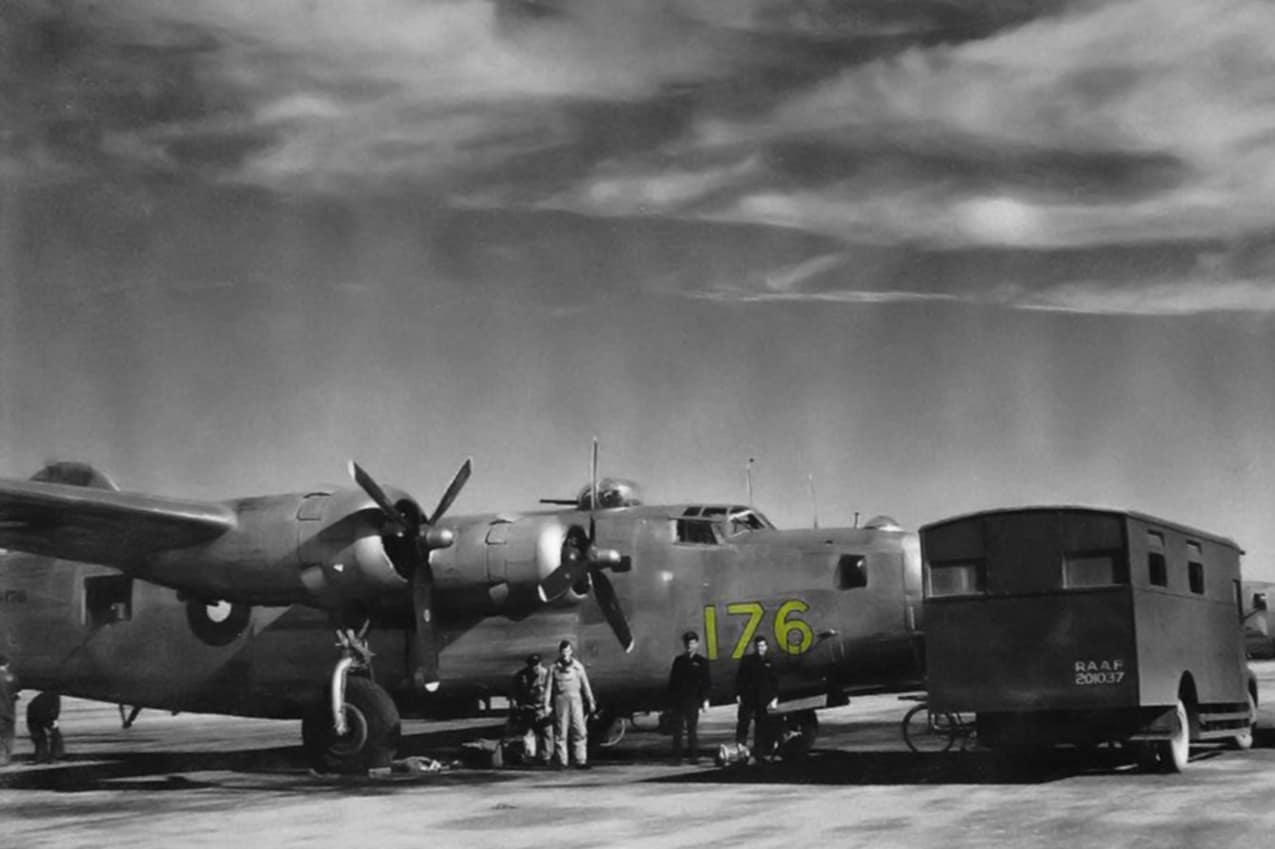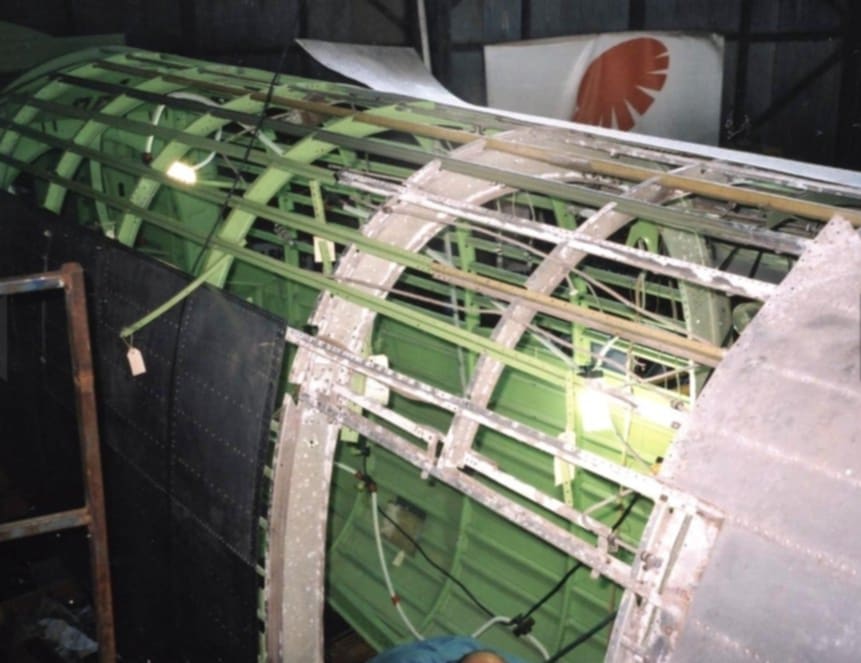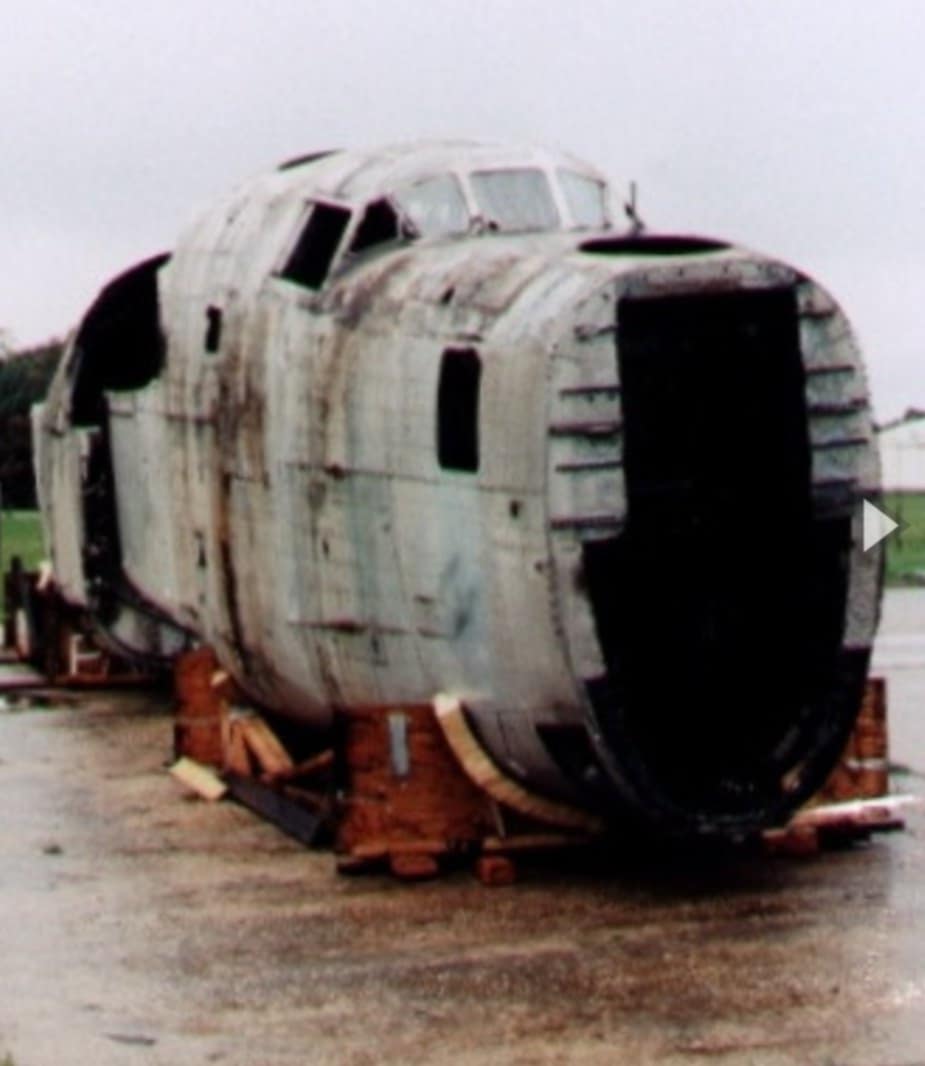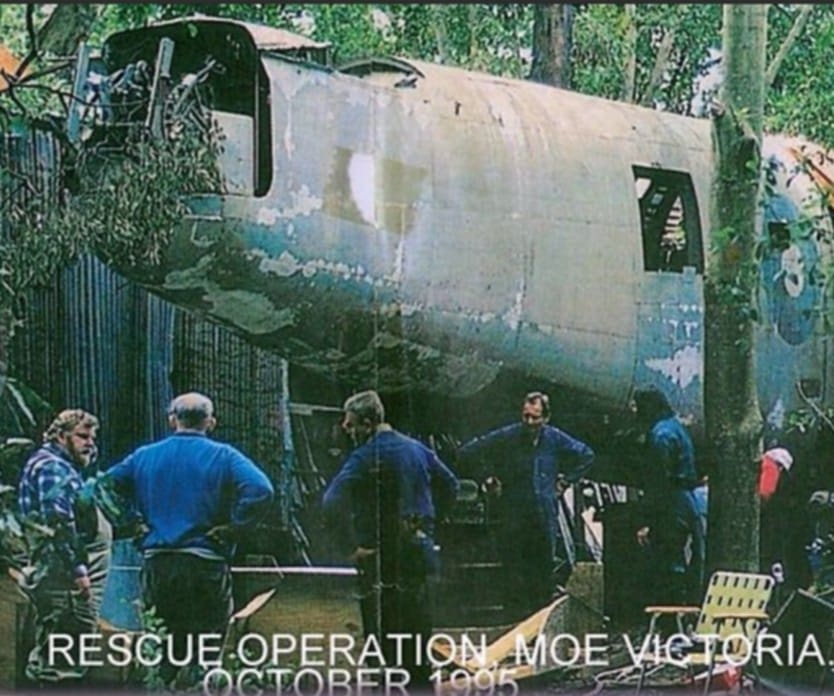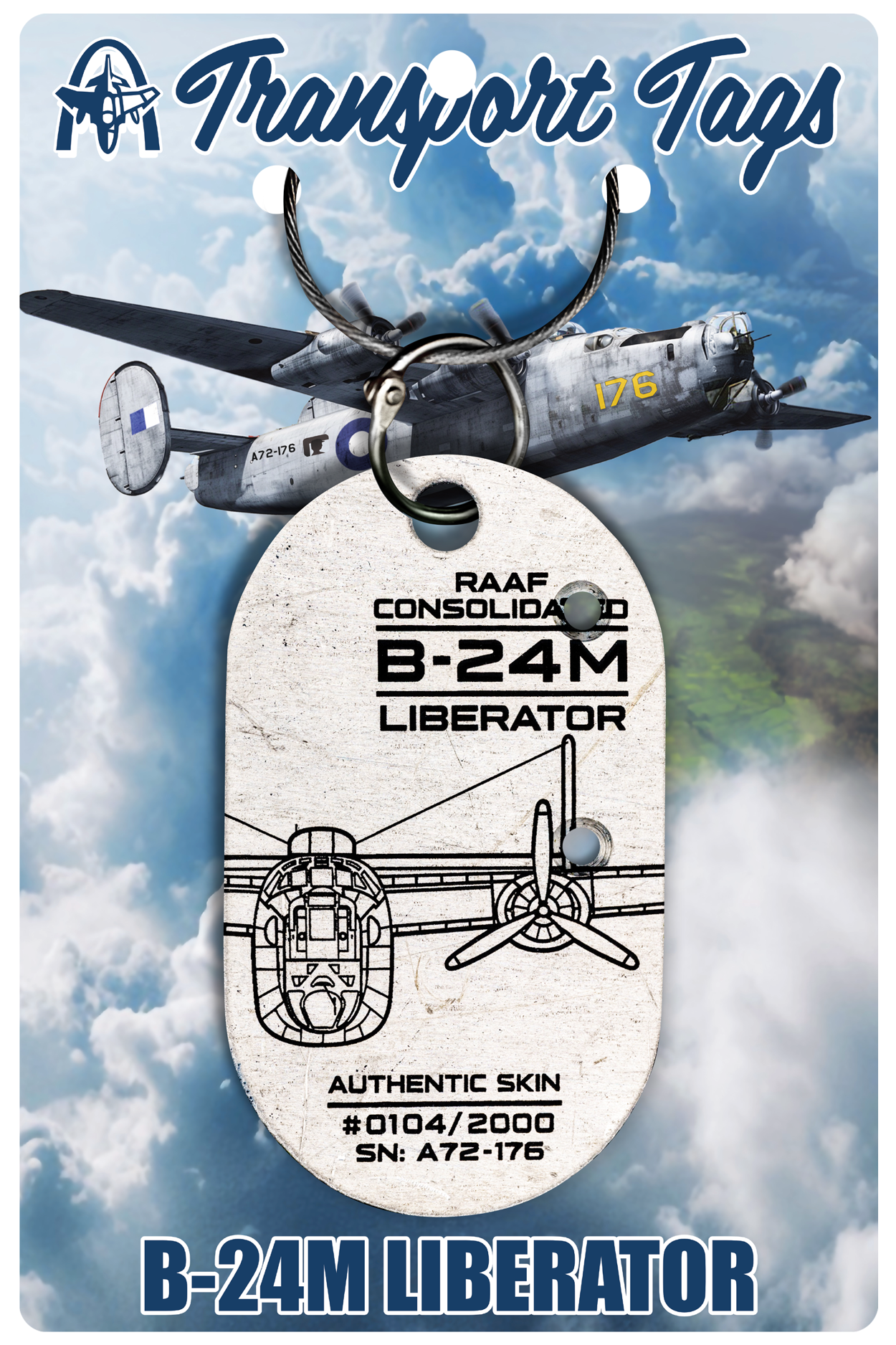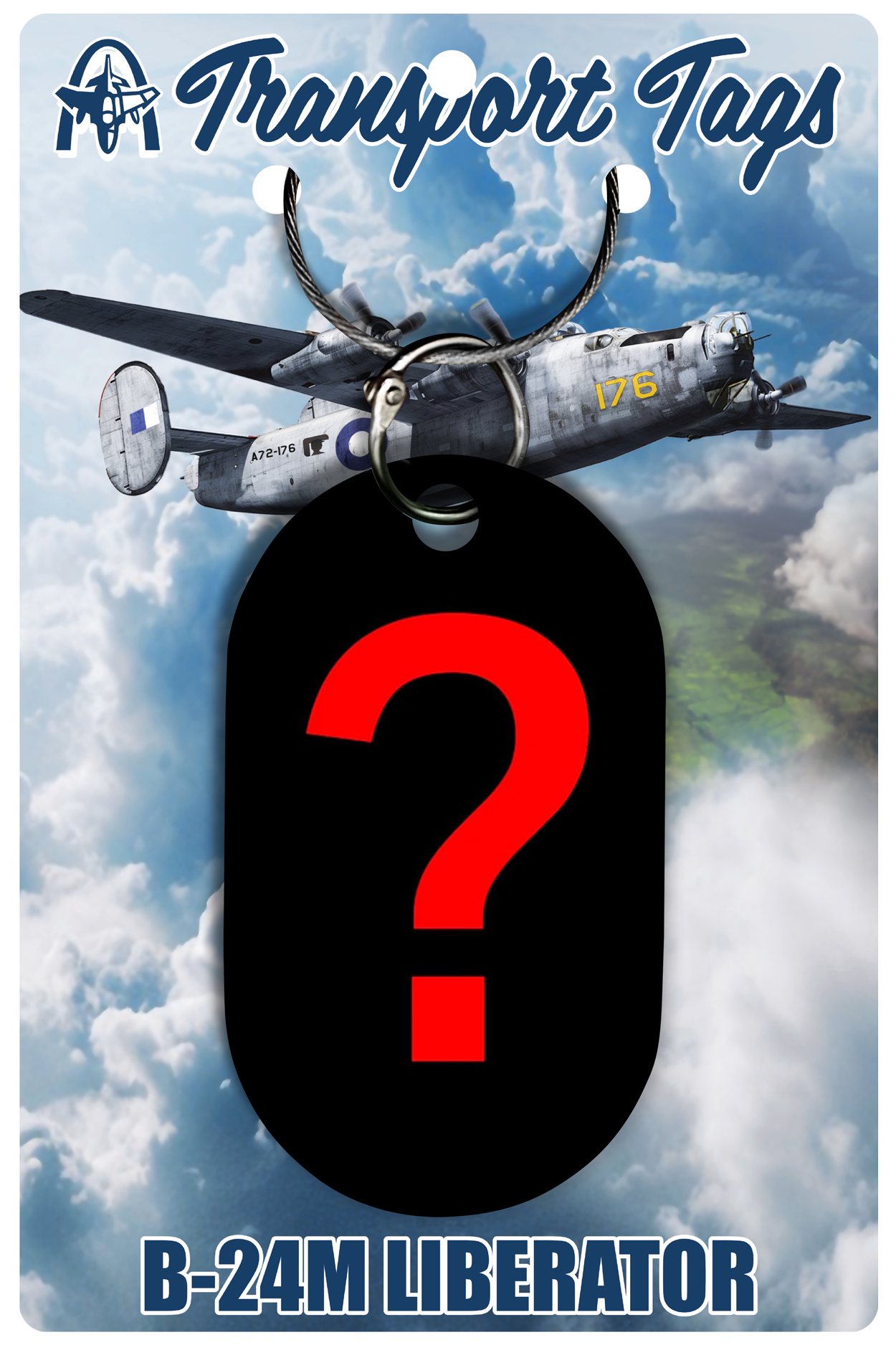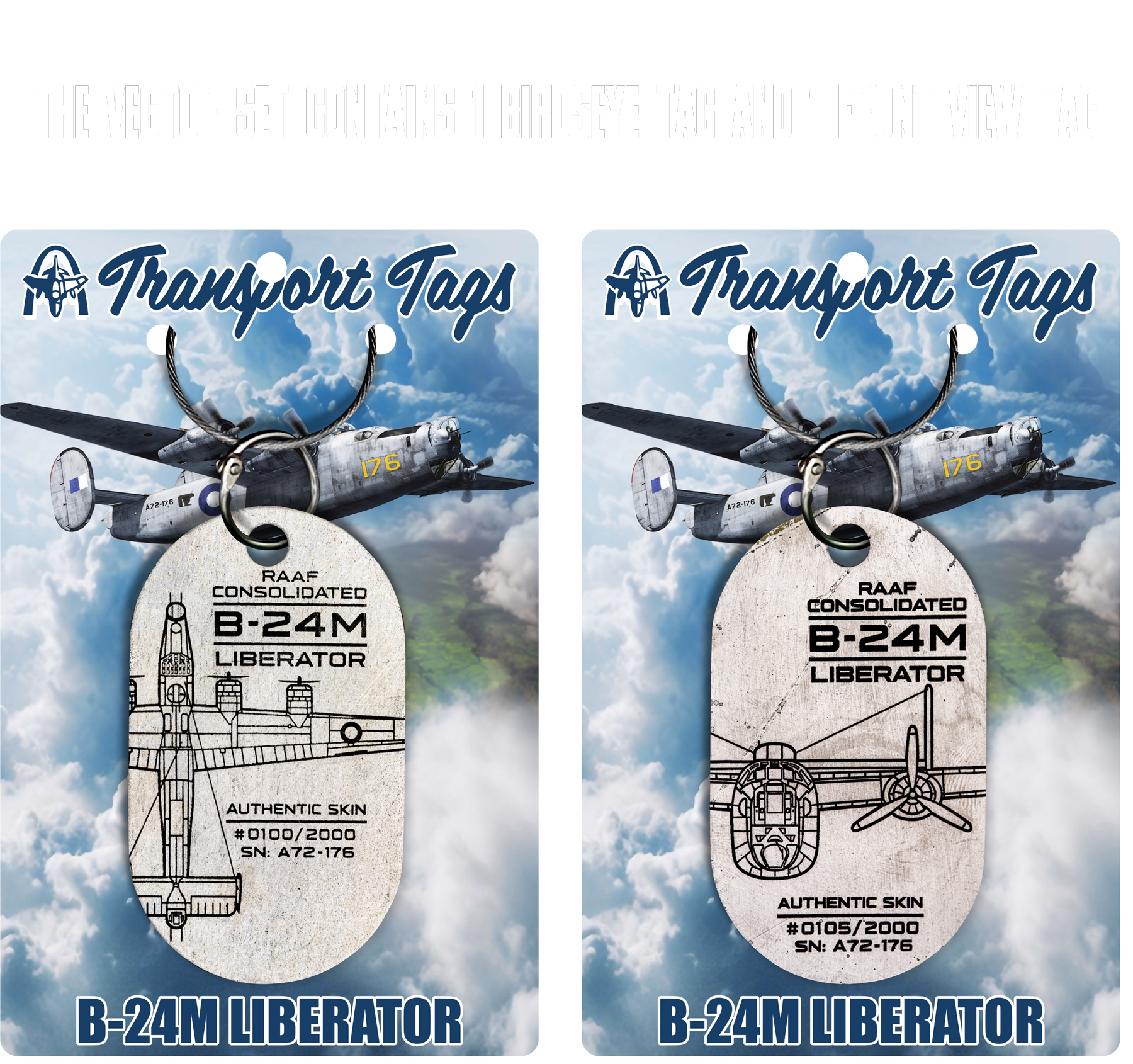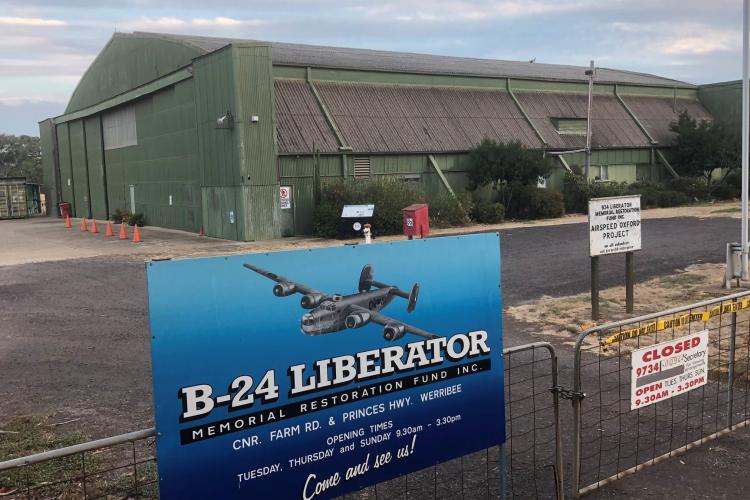B-24M Liberator
B-24M Liberator
Couldn't load pickup availability
TransportsTags is making history not only with a very special and unique industry first but also with our very first collaboration tag in partnership with the B-24 Liberator Restoration Australia Museum in Werribee, Victoria.

Our B-24M Liberator S/N 44–41956 was built for the RAAF as a B-24M and assigned the serial A72-176. It flew to Australia and was modified with a search radar, becoming a B-24M model taken on charge in 1944. It joined 7 OTU at Tocumwal, New South Wales, training crews on bomber operations. By war's end, 50 aircraft and 5,000 personnel were stationed at Tocumwal. A72-176 flew training and transport missions until March 1946 before being retired and disposed of in 1948.
 A72-176 is the only B-24 in the Southern Hemisphere and is currently undergoing an extensive restoration by the Liberator Restoration Australia in Werribee, Victoria, with plans to make it near-flyable.
A72-176 is the only B-24 in the Southern Hemisphere and is currently undergoing an extensive restoration by the Liberator Restoration Australia in Werribee, Victoria, with plans to make it near-flyable.
In 2025, with the assistance of our dear friend Thomas Hartmann, we were able to work closely with the B-24 Liberator Memorial Restoration in Werribee, Victoria, Australia. We are absolutely thrilled to have shared our first ever museum partnership for such a legendary aircraft that has never been tagged before; this is a tremendous honor.
 If you would like to learn more about this amazing aircraft please visit https: https://www.b24australia.org.au
If you would like to learn more about this amazing aircraft please visit https: https://www.b24australia.org.au
(Please note that Transport Tags LLC is NOT an authorized or licensed distributor of the United States Army/Air Force, Australian Royal Air Force (RAAF), or of the Consolidated, Ford, Douglas, or North American companies, and uses their names, markings, etc., for identification purposes ONLY in accordance with the Lanham Act).
Vehicle History
Vehicle History
The Consolidated B-24 Liberator, a heavy bomber pivotal to the Allied effort in World War II, was designed and manufactured by Consolidated Aircraft Corporation in San Diego, California. Development began in 1939 when the U.S. Army Air Corps sought a bomber with greater range and payload than the Boeing B-17 Flying Fortress. Consolidated, under the leadership of engineer David R. Davis, leveraged its experience with long-range flying boats to create the B-24, incorporating the innovative Davis wing—a high-aspect-ratio design that enhanced lift and fuel efficiency. The first prototype, the XB-24, flew on December 29, 1939, and production models quickly followed, with the B-24D entering service in 1941. Consolidated’s plants in San Diego and Fort Worth, alongside licensed production by Ford, Douglas, and North American, churned out over 18,400 units by 1945, making it the most-produced American heavy bomber of the war.
The B-24’s design evolved rapidly to meet wartime demands. Early models faced issues like structural weaknesses and vulnerability to battle damage, but iterative improvements—such as enhanced armor, self-sealing fuel tanks, and turbocharged Pratt & Whitney R-1830 engines—made later variants like the B-24J and B-24M more robust. Its distinctive features included a twin-tail configuration, a slab-sided fuselage for spacious bomb bays, and a tricycle landing gear, a novelty for heavy bombers. The Ford Motor Company’s Willow Run plant, a marvel of mass production, peaked at one B-24 every 55 minutes, showcasing industrial might. However, crews often found the Liberator less forgiving to fly than the B-17, earning it nicknames like “Flying Boxcar” due to its utilitarian design and handling challenges in combat conditions.
The B-24 saw extensive use across all major theaters of World War II, serving primarily with the U.S. Army Air Forces and the Royal Air Force. In Europe, it conducted strategic bombing campaigns against German industrial and military targets, notably during the Ploesti oil field raids in 1943. In the Pacific, its long range—up to 2,800 miles with a reduced bomb load—made it ideal for maritime patrol and anti-submarine missions, with variants like the PB4Y-1 used by the U.S. Navy. The Liberator also served in secondary roles, such as transport, reconnaissance, and electronic warfare. Post-war, surplus B-24s were scrapped or repurposed for civilian use, with some converted into cargo planes. Its legacy endures as a symbol of American industrial and military prowess, though it remains overshadowed by the more celebrated B-17 in popular memory.
Product Specifics
Product Specifics
Multiple variants available. Tag back will be blank unless customization is requested at checkout.
Vehicle Stats
Vehicle Stats

Length: 67‘2“ (20.47 M)
Wingspan: 110’ (34 M)
Max Bomb Load: 8000 LBS (3600 kg)
Top Speed: 297 MPH (478 km/hr)
Armament: 10 x .50 Caliber (12.7 mm); M2 Browning machine guns in 4 turrets and two waist positions.
Product Dimensions
Product Dimensions
Card Dimensions
Length: 5 1/2"
Width: 3 1/2"
Tag Dimensions
Length: 3"
Width: 1.75"
Thickness:
Regular Tags: 1.3mm - 6.8mm
Thick Tags: 9.1mm - 10.5mm
Disclaimer
Disclaimer
TransportTags are unique, handcrafted pieces made from genuine vehicle skin. Features like scratches, blemishes, or minor discolorations testify to their unique vintage appeal and authenticity. By purchasing, you accept the product may differ slightly from website images. Transport Tags LLC uses authentic material from transportation vehicles, potential containing hazardous substances. Not intended for ingestion, inhalation, or use by small children. Transport Tags LLC is an independent company, not affiliated with, sponsored or endorsed by any entities. We use branded names and insignia for identification under the provisions of the Lanham Act, without implying any association or endorsement. For more information, read our detailed product safety and legal information here.
Share
















